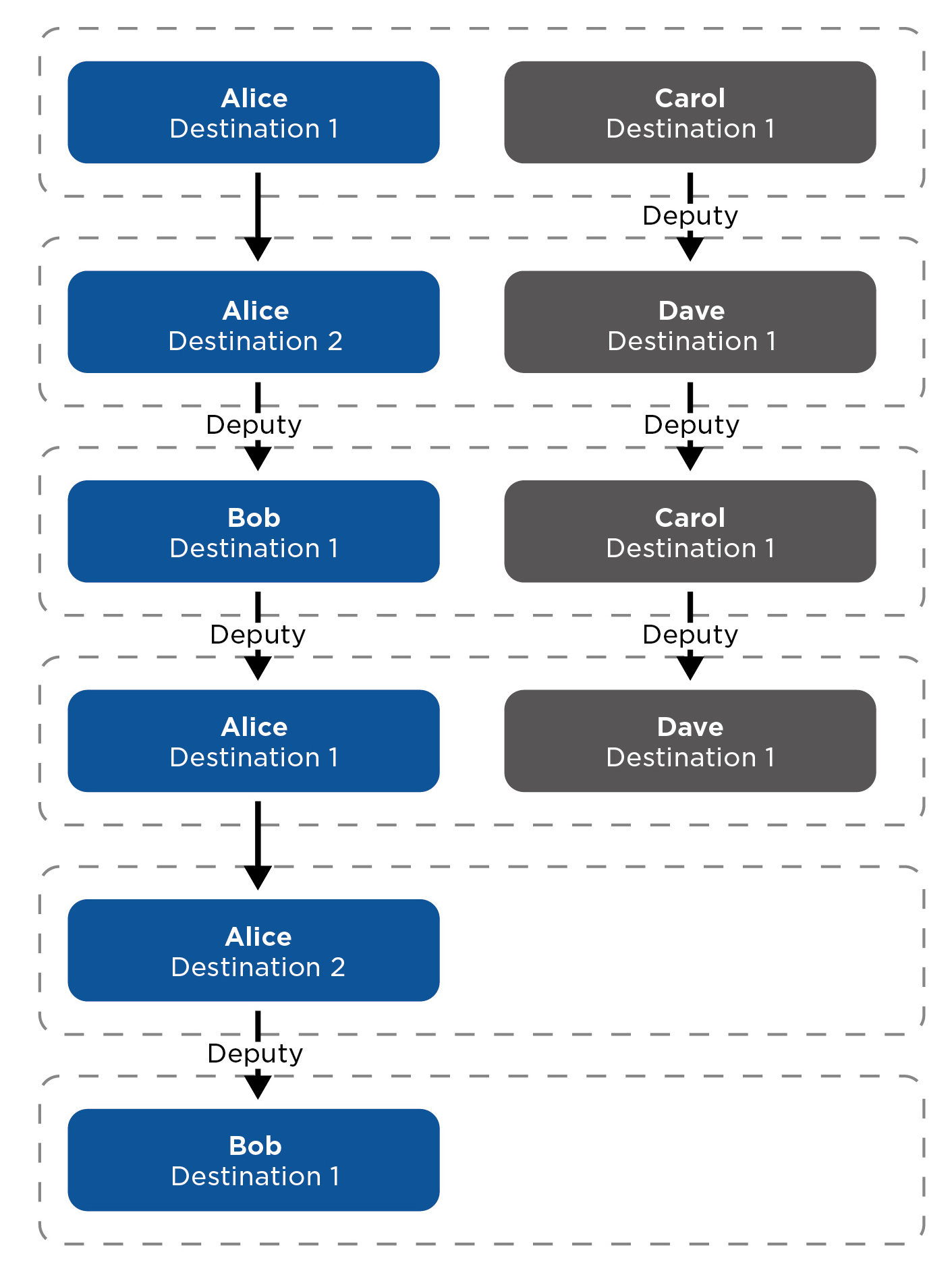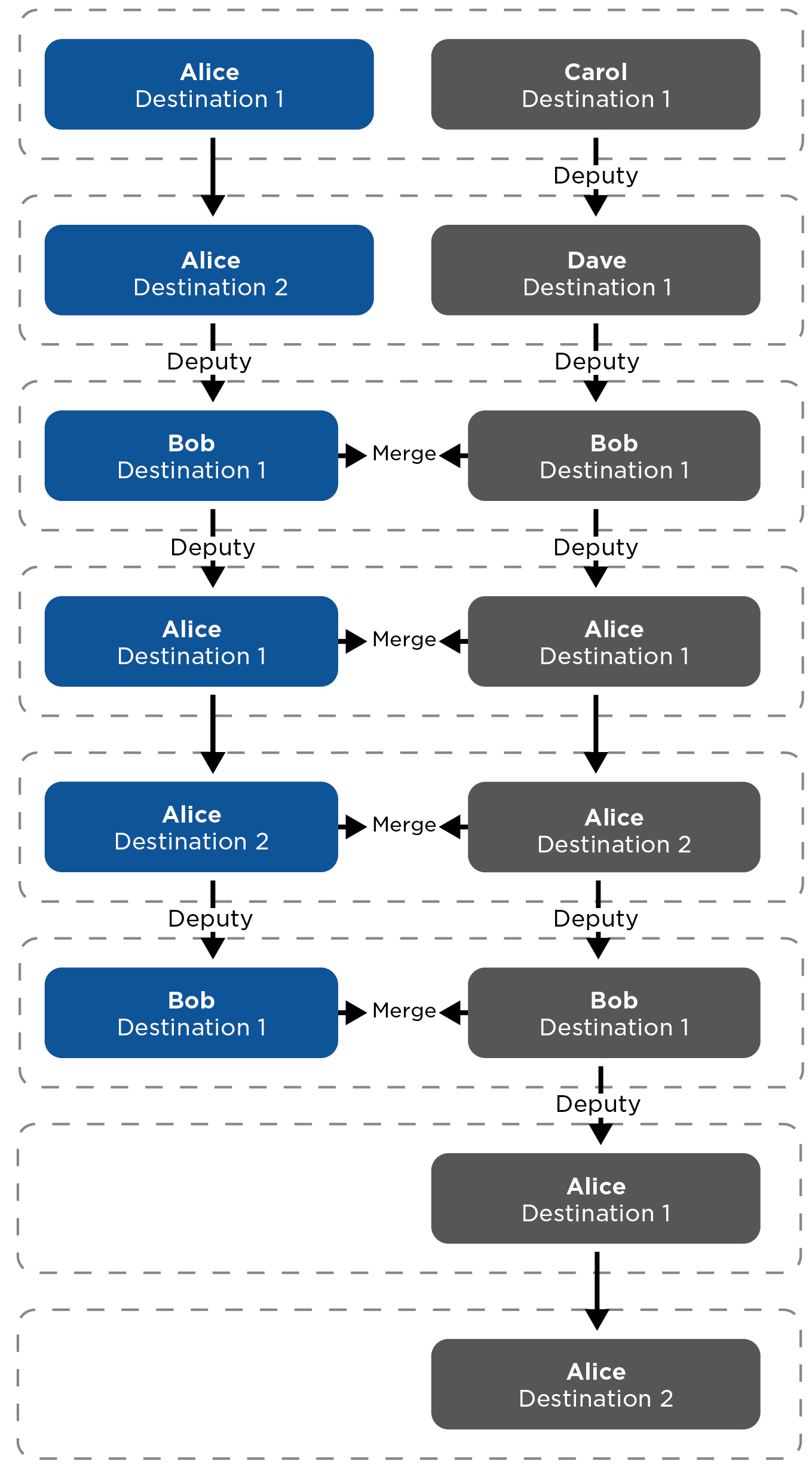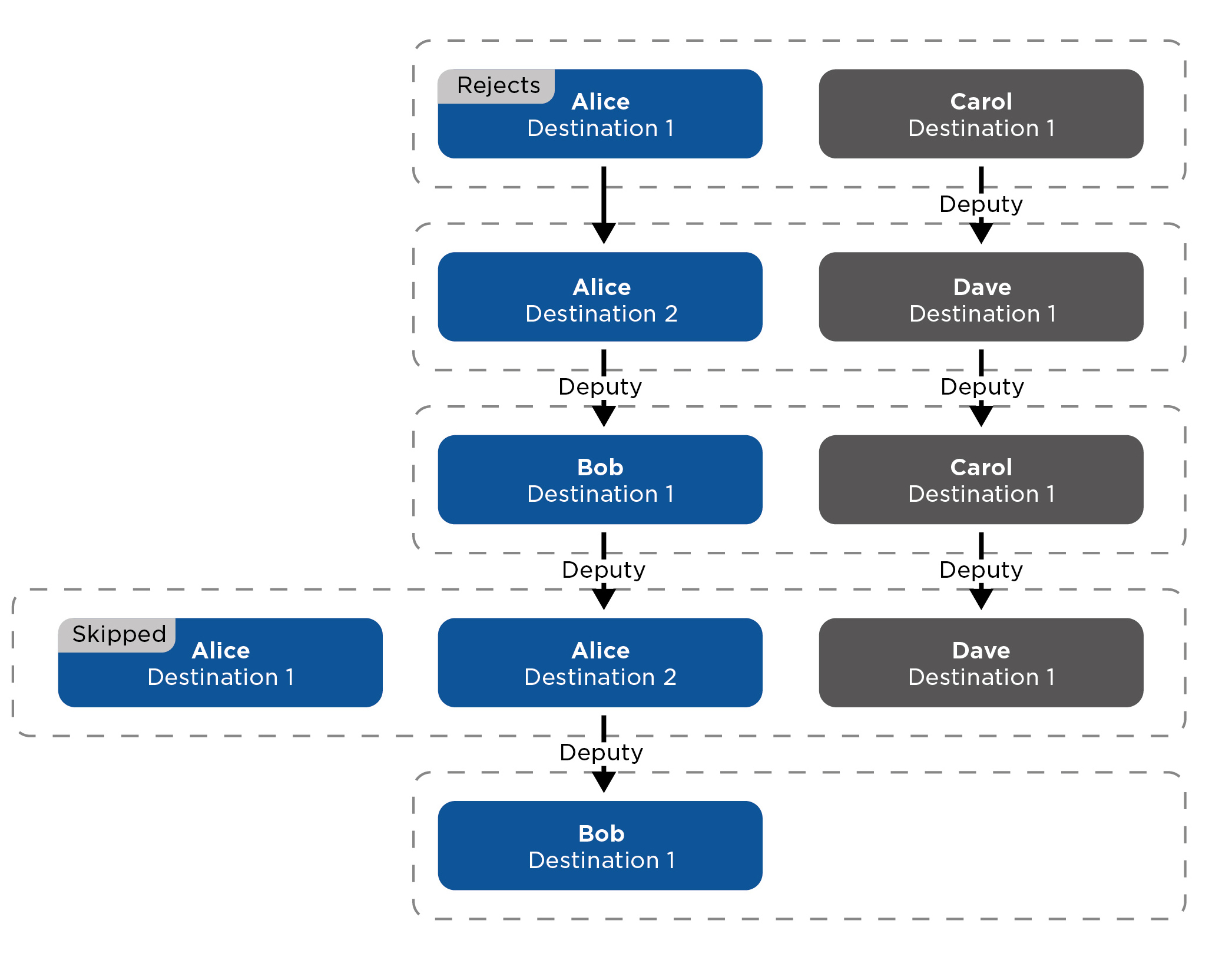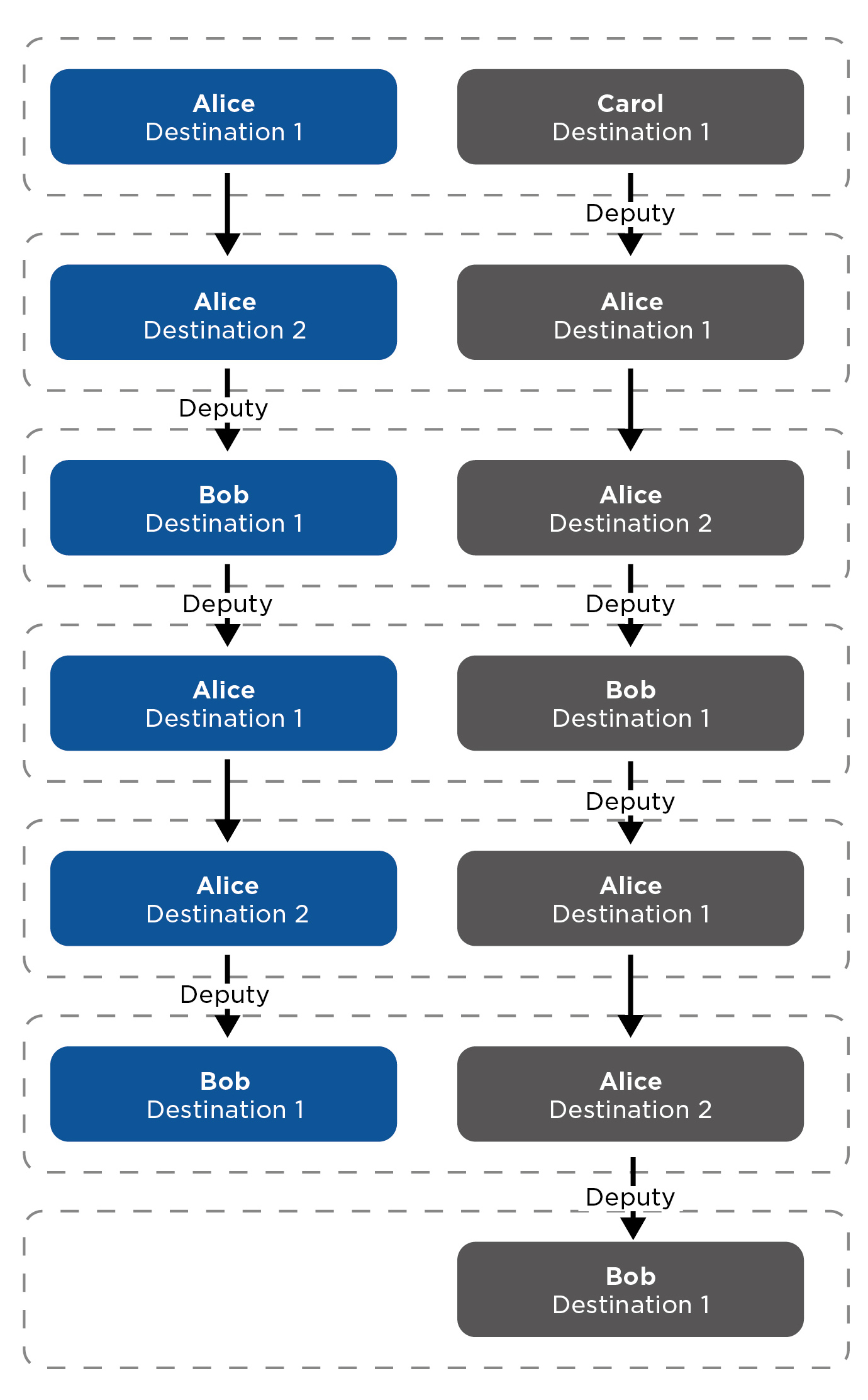5.3.1.1 Dial Cycles Limit
This parameter sets the maximum number of consecutive calls to a calling destination when there is a dialing cycle of deputies (the simplest example of a dialing cycle is when a user has configured itself as a deputy, another example is two users who are configured to be deputies of each other).
Example 1
The algorithm first resolves the branches independently of each other. There are users Alice and Carol configured to one button in the example below (by pressing the button two parallel calls are initiated together). The Dial Cycles Limit is set to 2. Alice has two phone numbers (calling destinations), the other users have only one calling destination. The deputies are configured as follows:
- Alice is the deputy of Bob
- Bob is the deputy of Alice
- Carol is the deputy of Dave
- Dave is the deputy of Carol
The resulting calling scheme looks like this (in case no one picks up or rejects the call):
Let’s take the previous example and change the deputy of Dave to Bob. This way the two branches are merged (only one call takes place from step 3 further on). You can also see that Alice is eventually called three times. This is caused by the fact that the Dial Cycles Limit is applied to each branch individually and in fact Alice is called only twice in the blue branch and as well only twice in the purple branch.
It is possible that two calling destinations of a single user are called at once. This can be achieved by configuring the scheme similarly to the example below but this situation may also arise from skipping of the destinations that rejected the call previously.




